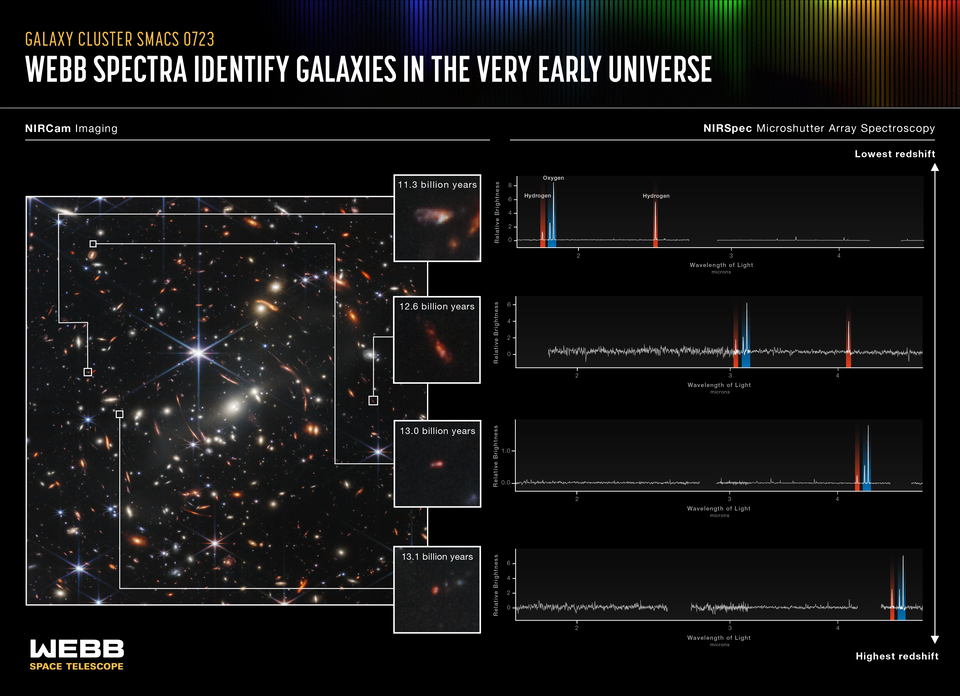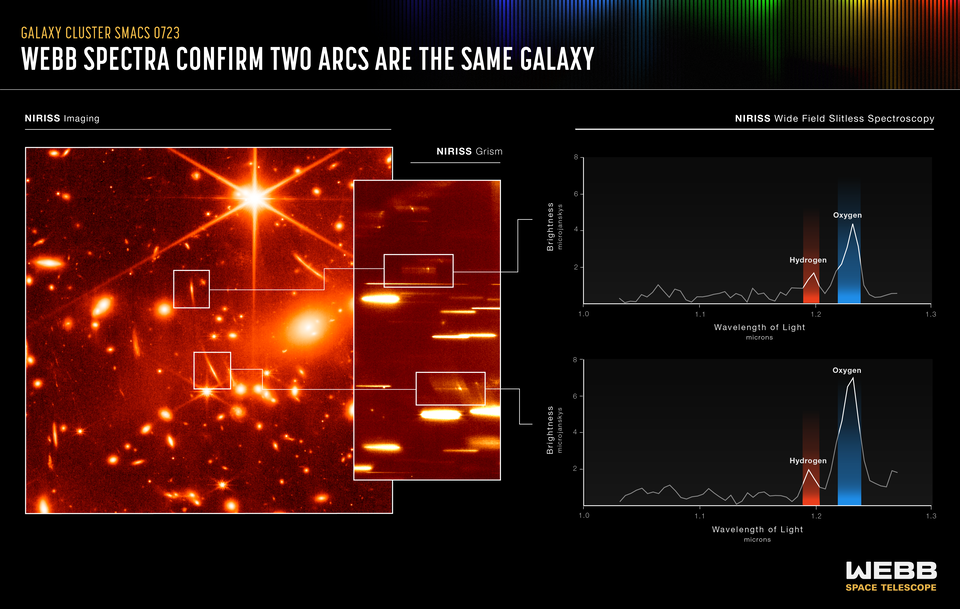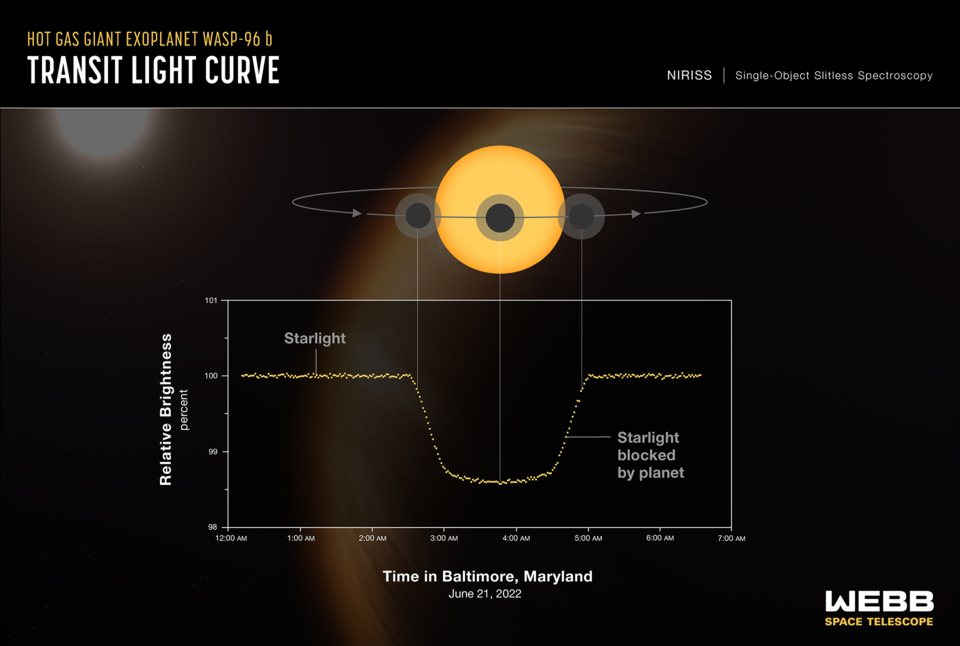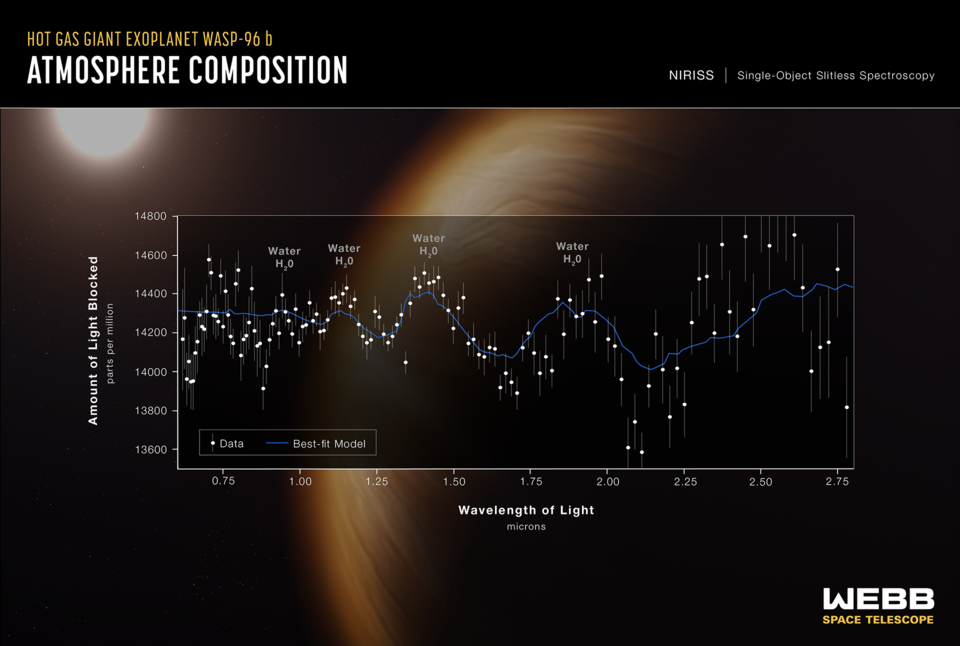A huge part of The James Webb Space Telescopes capabilities is to analyse the collected light using a spectrograph.
This splits the light into the different colours, where we can see signatures in the light, which tell us what the stars might be made of.
The bright lines we see in these spectra tell us what elements the stars are made of.
Later stars, like our Sun, have lots of heavier elements in them, as these elements can only be created within stars.
Today’s universe has been enriched with these heavier elements from stars that have gone supernova (exploded, for want of a better word) at the end of their lives.
Webb will be looking so far back in time that it will be able to see the very first stars and galaxies that were formed.
These should have very little of these heavier elements and should mainly be composed of hydrogen & helium.
A Spectrum isn’t as attention grabbing as the colour images, but these will give us a huge insight into the objects Webb can observe.
A couple of spectra have already been published.
Distant Galaxy SMACS 0723 – Captured by the NIRSpec Instrument.
We have never been able to take an observation like this of a galaxy that is so far away.
So what does this spectrum show us?
Plotting Relative Brightness Vs Wavelength there are a number of distinct peaks.
These show us that there is an abundance of Hydrogen, as expected, but also Oxygen, Hydrogen and Neon.
This galaxy is 13.1 billion light years from Earth, so we are seeing it as it looked 13.1 billion years ago.
The Universe is only 13.8 billion years old, so this galaxy was formed less than 0.7 billion years after the Universe came into existence.
I am sure the appearance of the much heavier element of Neon in this early galaxy is going to cause some head scratching.
The Distance of the Galaxies.
Another observation Webb has been able to make is to compare the red-shift of the spectra to see how far each galaxy is.
The further to the right the spectral lines are shifted in the spectrum, the faster the galaxy is moving away from us.
We know from Edwin Hubble’s observation in 1929, that the further away and object is, the faster it moves away from us.
This shifts the wavelengths of light into the red or infra-red. So-called Red-Shift.
Four Galaxies within the newly released deep field have had their distances measured as shown below:
In the wide-angle view released on Monday evening, two separate arcs shown in the image above have also been confirmed as being created from as the same distant galaxy using the spectrum.
Exoplanet Atmosphere Studies.
The other exciting observation that Webb can do is to look for Exoplanets and measure their spectrum.
Exoplanets are planets orbiting around distant stars.
Astronomers have currently confirmed over 5,000 of these exist, and there are probably many more for us to find.
These distant planets can either be observed and their spectra taken directly (As long as they are far enough away from the glare of their parent star).
Or the stars spectrum can be compared when the planet transits across the star as shown below.
Webb can capture the spectra and work out what the planets atmosphere is composed of.
We may then be able to look for chemicals that might suggest life could exist on the planet.
So if we want to find life that is similar to ours, we’d look for the presence of Water, Oxygen, Methane and Carbon Dioxide within those atmospheres.
There could be some false positives along the way, but it helps narrow down where life might just exist beyond Earth.
Webb has already measured the atmosphere of a distant exoplanet called WASP-96 b.
It found the atmosphere to be very steamy, with plenty of water vapour present in its atmosphere as shown in the spectra at the bottom of this page.
It did not detect oxygen, methane, and carbon dioxide at this time, but other planned observations by Webb using different instruments could reveal these later.
We really are living in very exciting times.
Webb is really going to revolutionise a lot of what we know and produce lots of surprises along the way during its 20 years or so service we now have ahead of us.






